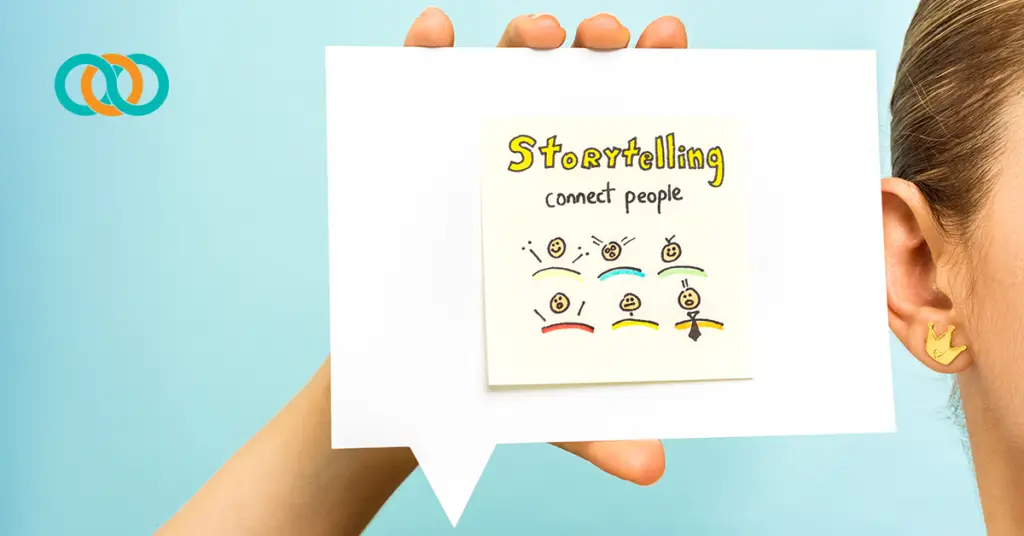Let’s be honest—most eLearning isn’t exactly page-turning stuff. But it can be.
When done well, storytelling in eLearning turns boring clicks into meaningful “aha” moments. It pulls learners into the experience, helps them retain information, and—bonus—it makes the course way more enjoyable. At TrainingPros, we see this all the time: our best eLearning developers and instructional designers know how to use story to turn dry content into something learners actually remember.
Whether you’re teaching leadership development, product knowledge, customer service, compliance, or even highly technical processes, storytelling gives your content staying power.
Here’s how storytelling can upgrade your training—and why it’s a skill every instructional design consultant eLearning development contractor should master.
1. Stories Make Content Stick
There’s a reason people remember a good movie or a gripping book long after they’ve finished it. Our brains are wired to process and retain stories more easily than abstract facts.
In the context of training, this means a well-crafted scenario will almost always outperform a text-heavy slide. For example, instead of telling a new manager to “give clear and timely feedback,” show a character struggling with that exact challenge. Let learners walk through the situation with the character, and they’ll retain the concept far better.
Great instructional designers use storytelling techniques—like character development, conflict, and resolution—to create learning moments that last.
2. They Put Learners in the Driver’s Seat
Branching scenarios are a popular tool in the eLearning developer’s toolkit for a reason. They allow learners to make choices and see the consequences—without the real-world risk.
Say you’re building a cybersecurity course. Instead of listing best practices, build a story around a character who clicks on a suspicious link. Let the learner choose what happens next. Do they report it? Ignore it? Each path teaches a different lesson. And since the learner is in control, the information sticks.
These interactive storylines make learning more engaging and more personal.
3. They Humanize Complex Topics
Let’s face it: some topics just aren’t naturally exciting. Compliance training. Safety protocols. Data entry systems. But storytelling can bring these subjects to life.
An experienced eLearning developer can turn even the driest material into an engaging narrative. For example, instead of listing rules about data privacy, show what happens when someone misuses customer information. Add real-world stakes, like losing trust or facing legal consequences, and suddenly the lesson feels urgent and relevant.
Stories ground abstract topics in real situations, making them easier to understand—and care about.
4. Stories Make Diversity Shine
Storytelling is one of the most natural ways to include a variety of voices and perspectives in your training. When learners see themselves—or someone unlike them—reflected in a scenario, they connect more deeply to the content.
A thoughtful eLearning developer will craft stories that feature characters of different backgrounds, job levels, identities, and experiences. This not only increases engagement—it helps foster a culture of inclusion and empathy in your organization.
And the best part? It happens organically, through the power of a well-told tale.
5. They Don’t Have to Be Long or Fancy
Not every story needs to be a full-scale cinematic production. In fact, some of the best eLearning moments come from short, simple stories told well.
A two-minute scenario. A short dialogue. A real quote from an employee. These little narrative touches can make a huge difference in how learners relate to the material.
Experienced eLearning developers know how to keep it tight. They use just enough story to draw learners in, but never lose sight of the training objectives or overwhelm the course with fluff.
6. A Good Story Has a Purpose
Storytelling in eLearning isn’t about entertainment for entertainment’s sake. It’s about aligning the story with the learning goal.
What do you want the learner to do differently after the course? What decisions should they make with more confidence? What values or behaviors are you trying to reinforce?
When an eLearning developer understands the desired outcome, they can build a story that moves learners toward it. A compelling narrative is not just memorable—it’s transformational.
Every company has a story to tell, even in its training. Whether you’re rolling out a new process or refreshing outdated content, the right instructional designer or eLearning developer can help turn your training into a tale that teaches.
Download Your Copy of 9 Things to Consider when Hiring an eLearning Developer
Ready to Work with Us?
Does your learning and development department have more projects than people? TrainingPros has been named as a Top 20 Staffing Company internationally by Training Industry. Coupling this award with being named a Smartchoice Preferred Provider by Brandon Hall Group for 2025 underscores TrainingPros’ unwavering commitment to delivering high-quality, tailored training solutions. If you need instructional design consultants or learning experience designers for custom content projects, contact one of our industry-expert relationship managers today. When you have more projects than people™, let us find the right consultant to start your project with confidence. Schedule a consultation today.
- 1share
- LinkedIn0
- Twitter0
- Facebook0
- Love This1











